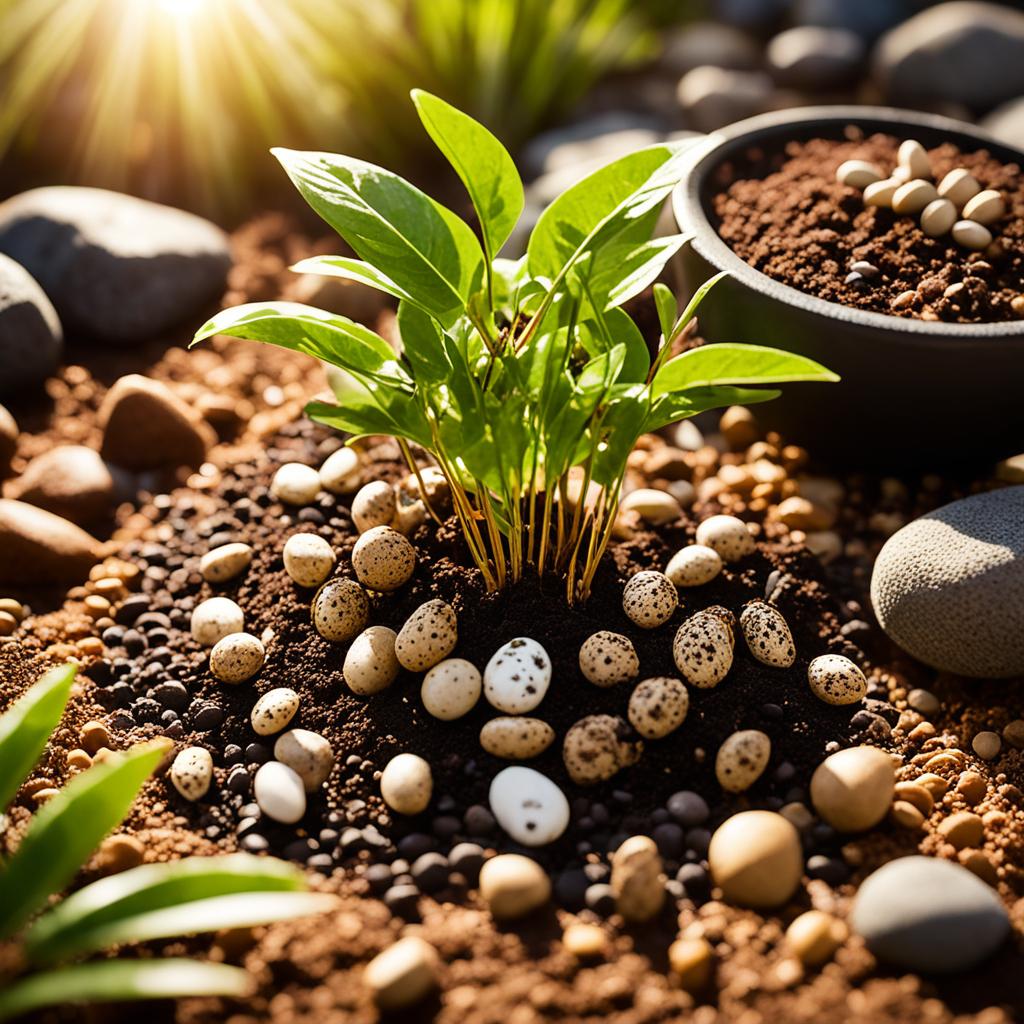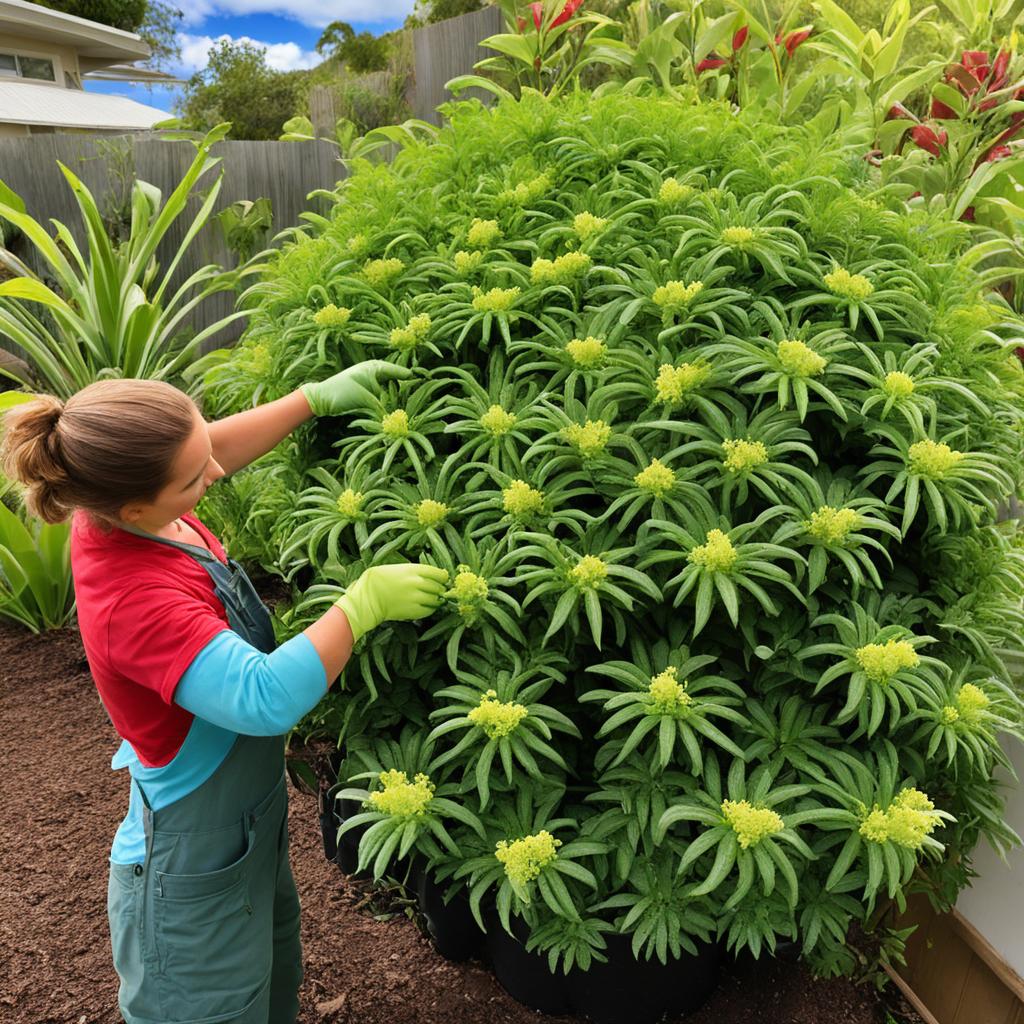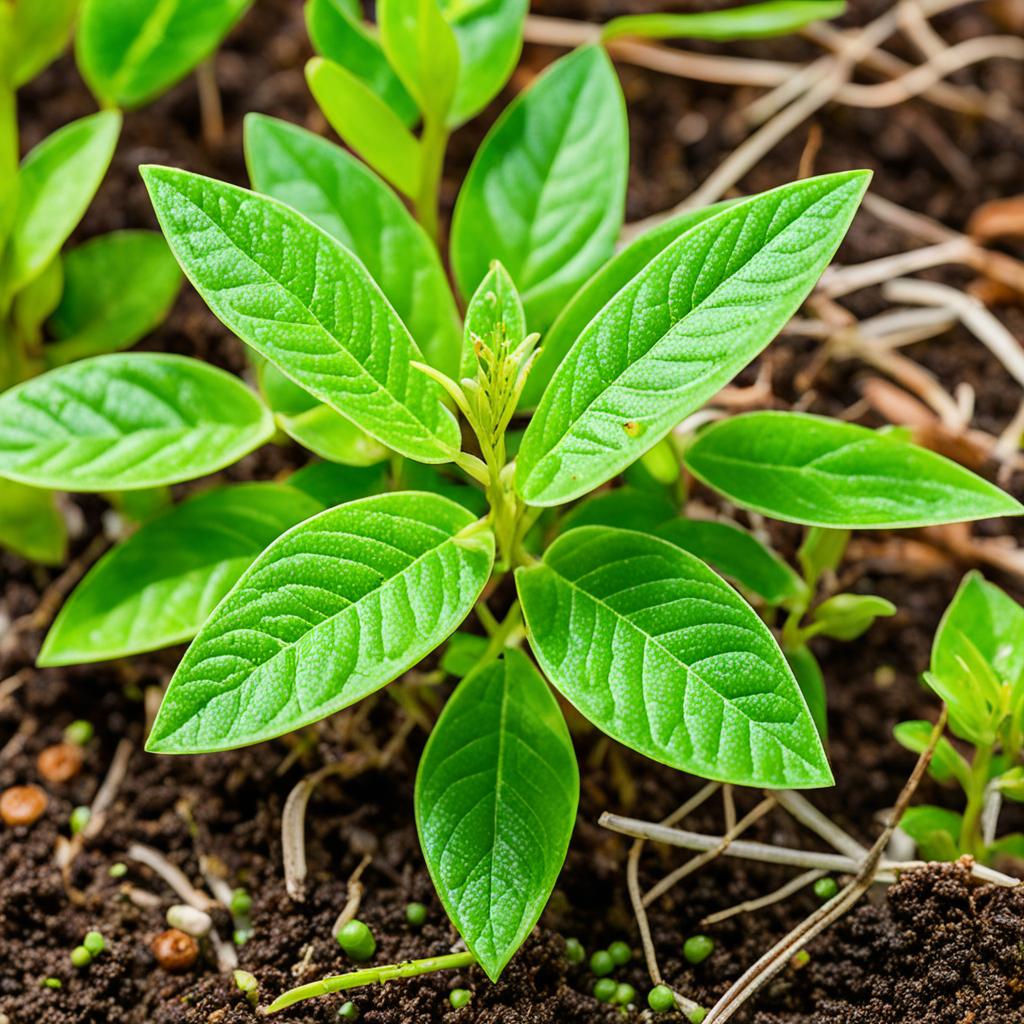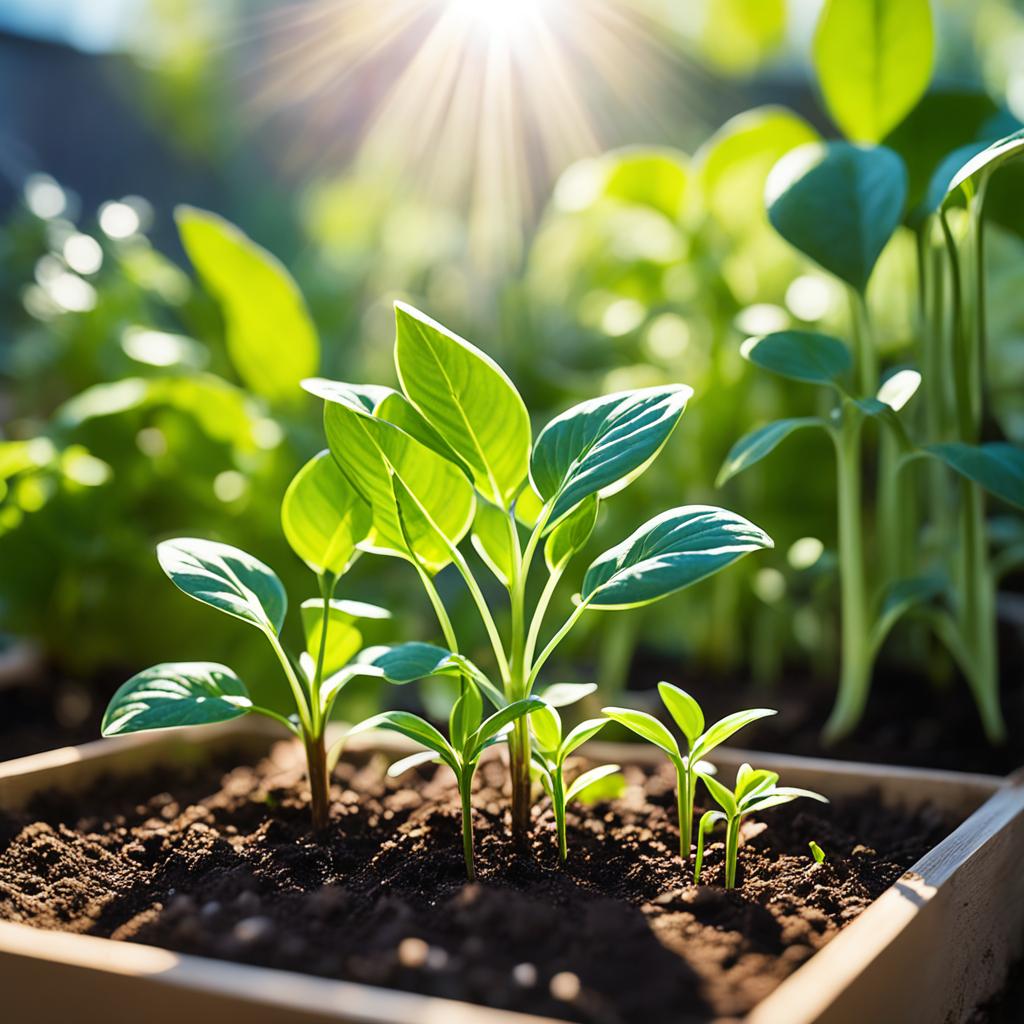Have you ever wondered if it’s possible to grow your own Hawaiian Baby Woodrose? This captivating climbing vine, known for its heart-shaped leaves and stunning flowers, can add a touch of exotic beauty to any garden or indoor space. But what does it take to successfully cultivate this unique plant?
In this article, we will delve into the growing conditions, planting techniques, and care tips needed to nurture your very own Hawaiian Baby Woodrose. Whether you’re an experienced gardener or a beginner with a green thumb, this guide will provide you with the knowledge and insights to bring this enchanting vine to life.
So, are you ready to embark on a journey of botanical fascination? Let’s dive in and explore the fascinating world of growing Hawaiian Baby Woodrose.
Understanding the Growing Conditions
The ideal growing conditions play a crucial role in the successful cultivation of Hawaiian Baby Woodrose. This climbing vine thrives in warm climates with plenty of sunlight, making it a perfect choice for gardens in sun-drenched regions.
The first essential requirement for growing Hawaiian Baby Woodrose is a warm climate. This plant loves heat and will flourish in temperatures that remain consistently warm throughout the year. So if you live in a region with a mild or tropical climate, you’re in luck!
Sunlight is another key factor in creating the perfect environment for your Hawaiian Baby Woodrose. This plant needs plenty of direct sunlight to thrive and produce those stunning flowers. Ensure that your planting location receives at least six to eight hours of sunlight each day. During the flowering season, the more sunlight it gets, the more vibrant the blooms will be.
When it comes to the soil, Hawaiian Baby Woodrose prefers a moist and well-draining composition. It’s crucial to provide soil that retains moisture while allowing excess water to escape. Organic matter such as compost can be added to the soil to improve its fertility and moisture-retaining capacity.
Avoid overwatering your Hawaiian Baby Woodrose, as this can lead to root rot and hinder its growth. The soil should be allowed to slightly dry out between watering sessions. Keeping a consistent watering schedule tailored to the plant’s needs will help maintain the right moisture balance.
Remember:
- Choose a warm climate for optimal growth.
- Ensure your plant receives plenty of sunlight.
- Use moist and well-draining soil enriched with organic matter.
- Be mindful of overwatering and allow the soil to slightly dry out between waterings.
| Requirements | Conditions |
|---|---|
| Climate | Warm and tropical |
| Sunlight | 6-8 hours of direct sunlight per day |
| Soil | Moist and well-draining with organic matter |
| Watering | Avoid overwatering; allow soil to slightly dry between waterings |
By providing these ideal growing conditions, you are setting the stage for your Hawaiian Baby Woodrose to thrive and grace your garden with its stunning presence.
Planting Techniques

Planting Hawaiian Baby Woodrose seeds is a simple process that requires a few essential steps. Follow these instructions to ensure successful germination and healthy growth of your plants.
Soaking the Seeds
- Start by soaking the Hawaiian Baby Woodrose seeds in water for 24 hours. This process softens the hard outer shells of the seeds, making it easier for them to germinate.
Individual Pots
After soaking, transfer the seeds to individual pots. This allows each seedling to grow and develop without competition from other plants.
Pre-Moistened Soil
- Fill each pot with pre-moistened soil. The soil should be well-draining and rich in organic matter to provide the necessary nutrients for the seedlings.
Greenhouse-Like Environment
Cover the pots with plastic wrap to create a greenhouse-like environment. This helps to retain moisture and maintain a consistent temperature, promoting proper germination and early growth.
Place the pots in a warm and sunny location, ensuring they receive at least six hours of sunlight every day. This will provide the necessary energy for the seedlings to grow into healthy plants.
Here is an image of the Hawaiian Baby Woodrose seeds and their initial growth stage:
| Planting Techniques | Description |
|---|---|
| Soaking the Seeds | Soak the seeds in water for 24 hours to soften their outer shells and promote germination. |
| Individual Pots | Transfer the soaked seeds to individual pots to provide adequate space for growth and development. |
| Pre-Moistened Soil | Fill the pots with pre-moistened soil that is well-draining and nutrient-rich. |
| Greenhouse-Like Environment | Cover the pots with plastic wrap to create a greenhouse-like environment that retains moisture and maintains temperature. |
Care Tips

Proper care is crucial for the successful growth of your Hawaiian Baby Woodrose. By following these care tips, you can ensure that your plants thrive and flourish.
1. Regular Watering
Watering your Hawaiian Baby Woodrose regularly is essential to maintain its health. However, it’s important to strike the right balance and avoid overwatering or underwatering. Overwatering can lead to root rot, while underwatering can cause wilting. Monitor the moisture levels of the soil and water your plants when the top inch of soil feels dry to the touch.
2. Fertilizing
Fertilizing your Hawaiian Baby Woodrose every four weeks is essential for promoting healthy growth and vibrant blooms. Use a balanced fertilizer with a higher phosphorus content to enhance flowering. Follow the instructions on the fertilizer packaging for application rates and frequency.
3. Providing Support for Vines
As your Hawaiian Baby Woodrose vines grow, it is crucial to provide them with proper support to prevent drooping or breaking. These vigorous climbers can reach up to 30 feet in length, so sturdy support structures such as trellises or arbors are necessary. Gently guide the vines towards the support and secure them if needed.
| Care Tips | Frequency | Method |
|---|---|---|
| Watering | Regularly, when top inch of soil is dry | Gently water the soil around the base of the plant, avoiding direct contact with the leaves |
| Fertilizing | Every four weeks | Apply a balanced fertilizer with a higher phosphorus content according to package instructions |
| Supporting Vines | As vines grow | Guide the vines towards a sturdy support structure and secure if necessary |
By caring for your Hawaiian Baby Woodrose with regular watering, appropriate fertilizing, and providing proper support for the vines, you can enjoy the beauty and grace of this captivating plant. Remember, each plant is unique, so closely monitor its growth and adjust your care routine accordingly. With patience and dedication, your Hawaiian Baby Woodrose will thrive and bring a touch of tropical allure to your garden.
Dealing with Pests

When growing Hawaiian Baby Woodrose, it is important to protect your plants from pests, especially grasshoppers. These voracious insects can cause significant damage if left unchecked. Fortunately, there are several effective methods to prevent pests like grasshoppers from harming your Woodrose plants.
Companion Plants: One natural way to deter grasshoppers is by planting companion plants that they prefer. By growing these companion plants alongside your Woodrose, you can help distract grasshoppers and divert their attention away from your precious vines. Some companion plants that grasshoppers prefer include clover, cilantro, and dill.
Natural Pest Control: Another option is to use natural pest control methods to repel grasshoppers. Neem oil, derived from the neem tree, is an effective organic insecticide. It disrupts the hormonal balance of pests, preventing them from feeding and laying eggs. Simply dilute the neem oil according to the instructions and apply it to your Woodrose plants, focusing on the leaves and stems.
Nicotiana spray is also a natural and safe option for repelling grasshoppers. This spray is derived from the leaves of the nicotiana plant, which contains nicotine-based compounds that deter pests. Mix the nicotiana spray according to the instructions and apply it to your Woodrose plants, making sure to thoroughly coat the leaves and stems.
By implementing these preventive measures, you can protect your Hawaiian Baby Woodrose plants from grasshoppers and other pests. Remember to regularly monitor your plants for signs of infestation and take immediate action to prevent any potential damage to your thriving Woodrose vines.
| Preventive Methods | Effectiveness |
|---|---|
| Planting companion plants | Medium |
| Neem oil | High |
| Nicotiana spray | High |
Monitoring and Maintenance
Monitoring the growth of your Hawaiian Baby Woodrose is crucial for ensuring its health and vitality. By regularly checking for signs of distress, you can address any issues promptly and provide the necessary care to help your plant thrive.
Pay close attention to the leaves of your Hawaiian Baby Woodrose. Look out for any yellowing, browning, or drooping, as these can be indicators of overwatering, nutrient deficiencies, or other underlying problems. If you notice any of these signs, it’s important to adjust your care routine accordingly.
One aspect to consider is the watering frequency. If you suspect overwatering, give the plant some time to dry out before watering again. On the other hand, if the leaves appear dry and wilted, it may be a sign that your plant needs more water.
Additionally, environmental factors such as temperature and humidity can significantly impact the growth and overall well-being of your Hawaiian Baby Woodrose. Ensure that the plant is in a suitable environment with the right levels of sunlight, warmth, and humidity. Monitor these factors closely and make adjustments as necessary to provide optimal conditions.
By diligently monitoring the growth of your Hawaiian Baby Woodrose, checking for signs of distress, adjusting your care routine, and providing the necessary environmental factors, you can ensure that your plant thrives and reaches its full potential.
FAQ
Q: Can I grow a Hawaiian Baby Woodrose?
A: Yes, growing Hawaiian Baby Woodrose is possible and can be a rewarding activity.
Q: What are the ideal growing conditions for Hawaiian Baby Woodrose?
A: Hawaiian Baby Woodrose thrives in warm climates with plenty of sunlight. It requires moist, well-draining soil that is rich in compost or organic matter.
Q: How do I plant Hawaiian Baby Woodrose seeds?
A: Soak the seeds in water for 24 hours to soften their hard outer shells, then plant them in individual pots filled with pre-moistened soil.
Q: What care tips should I follow for Hawaiian Baby Woodrose?
A: Regularly water the plants, avoiding overwatering or underwatering. Fertilize every four weeks with a balanced fertilizer and provide support for the vines as they grow.
Q: How can I deal with pests like grasshoppers when growing Hawaiian Baby Woodrose?
A: Planting companion plants that grasshoppers prefer or using natural pest control methods, such as neem oil or a nicotiana spray, can help prevent damage from pests.
Q: How should I monitor and maintain Hawaiian Baby Woodrose?
A: Regularly check for signs of distress in the leaves, adjust the care routine accordingly, and consider environmental factors like temperature and humidity.
